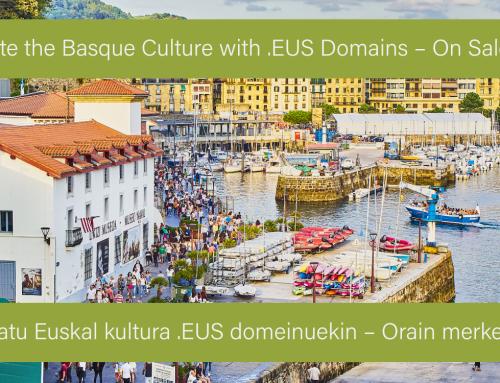What is .org?
The .org domain extension is one of the older ones and has been around for over 30 years. The first .org domain was registered back in 1985! It’s mentioned in RFCs going back to 1987, so it’s been around longer than some of this blog’s readers!
Anyone can register a .org domain name, but they’re often used by non-commercial organisations or linked to non-commercial activities.
There are currently around 10 million domains registered in .org which makes it one of the biggest domain extensions
Why are we talking about this?
Back in November 2019 the Internet Society, which owns PIR who run the .org registry, announced that they were selling it off to a private investment company
Who is involved in this debacle?
- ISOC the internet society
- PIR they run the .org registry
- Ethos Capital they want to buy PIR and .org
- ICANN has to rubber-stamp the change in control
Since the announcement was made that ISOC was selling PIR to a private investment company there have been hundreds if not thousands of articles and blog posts, as well as thousands of emails exchanged on the topic.
No matter how you may feel about the upcoming sale you have to recognise that people are quite impassioned about the topic.
While many of those who have voiced concerns do so in sincerity, there’s also some whose interests in .org aren’t quite that kosher.
It’s pretty clear that some people and organisations are using the current debacle to raise their own profiles. While that in itself might not be such a bad thing, the level of hyperbolic hysteria surrounding the current situation is unhelpful.
Let’s try to cut through the noise and get down to the bare basics.
ISOC does a lot of good and interesting things. In order for them to do so, they need consistent funding. Up until now the main source of that funding was PIR via the .org registry. The amount of money it generated for ISOC each year varied, but in 2018, for example, PIR gave ISOC USD $48.7 million.
ISOC does have other sources of revenue, but they are insignificant compared to the PIR revenues.
Over the last few years, domain registration volumes have flattened out quite a bit. There’s still growth, but it’s much smaller than in the past. So for ISOC’s board, the decision to divest itself of a source of income that might not be as reliable in the future made quite a bit of sense. There are, of course, various other arguments being put forward by members of their Board such as potential conflicts between ISOC’s overall mission and it being reliant on what could potentially become “old tech”. I don’t personally think that domains are going away anytime soon, but I also recognise that the way they’re being used will continue to evolve.
It’s clear from what some of the ISOC board members have been saying that Ethos Capital were not the first entity to express interest in acquiring .org. So what changed?
As I mentioned above the economics around domain names and technology, in general, have evolved and are still evolving. What was “trendy” 6 months ago can easily end up being consigned to history within a short few months.
Ethos Capital aren’t a “known” entity. While the people who are involved with them all have track records, the company itself is very new and has only made a handful of investments to date.
What each of the investments they’ve made to date shares in common, however, is kind of curious. While they’re mostly commercial ventures, they all share some level of “community” angle. So there’s a degree of “technology for good” coming through. Sure they’re entitled to make money, but they seem to genuinely be interested in backing ventures that aren’t solely about the money
ISOC did a really poor job of communicating what they were doing with PIR and why. The initial announcement was very superficial and lacked any “meat”. And it’s also very clear that ISOC’s board and senior management really were not prepared for the backlash that came shortly after the announcement. Instead of clearing the air and “owning” the issue, they issued a series of announcements none of which really got to the heart of the matter or fully addressed the concerns being raised.
So what are people upset about?
There’s various aspects of the sale that have upset people. In some cases, they’re upset about one particular aspect of it, but in many, they’re generally upset and ready to leap on pretty much any reason to take a sideswipe at the entire thing.
The Process
Some feel that ISOC’s way of handling the sales goes against the organisation’s stated ethos and that members and chapters should have had a say in the sale. Others feel that ISOC could have got more money for the registry if they’d shopped around more.
This all stems from the poor communication from the day of the announcement onwards. It’s unlikely that ISOC could have completely avoided a backlash, but they could have contained it more if they’d been better about communicating the deal earlier on.
ICANN’s role in all this is a bit messy. They’re like the chaperone whose arm was twisted to go on a date with the belle of the ball but are super uncomfortable getting in the way of the suitors.
They have a process to follow, which has already started, but ultimately they cannot simply block the sale unless they have a very good legal reason to do so.
ISOC wants out of the domain business, so crying to “stop” the sale is really futile. That horse has bolted. If ISOC were to renege on the current deal from Ethos Capital, then the reputation and value of PIR would be damaged in the eyes of other potential investors.
So what about pricing?
This one is a real red herring.
PIR has not raised the wholesale price of .org domains for a long time. Other gTLD registries have been upping their prices whenever they felt they could. At the moment there are over 10 million .org domains registered, and with the current renewal rates industry-wide that means there’s a fairly high degree of “stickiness”. Upping the wholesale price by 10% would have a negligible impact on most .org registrants.
The economics of domains aren’t particularly complicated, and for any person or organisation who is actively using the domains for their email or online presence, the domain is usually the lowest cost element.
Let’s look at some of the basic numbers for a small non-profit with say 20 staff:
- 1 x .org domain €15 / year
- Hosting per year for WordPress powered site €60 – €2000 (varies a lot on complexity, traffic etc.)
- SSL for the site €30 / year
Once you start factoring in other tools and services that any organisation would be using, never mind renting office space or even buying a couple of cups of coffee you quickly realise that the cost of the domain is just not important enough to really consider.
So why are so many people up in arms about pricing?
Hysteria and hyperbole essentially.
If PIR were to increase the wholesale price of a .org to say $5,000 a year they’d lose new registrations, their renewal rates would tank, and within a couple of years, there’d really be nothing left. The market simply could not support that level of a price increase.
Sure, the big not for profits would probably be stuck with their .org domain names, as the cost of switching is high, but as I’ve attempted to illustrate that cost is still relative.
“Dot Org is for not for profits” or “dot org is the home of not for profits.”
I keep hearing this.
While it might be true to a point, it’s not the whole truth by any stretch of the imagination. As others have pointed out, .org is not the first choice for not profits outside the US. In many cases, not profits will tend towards the local ccTLD.
The .org registration policy is and always was 100% open. Anyone can register a .org domain name, and they have. There’s zero restriction on who can register a .org domain name
Bear in mind PIR / .org was the funding source for ISOC. They would have been shooting themselves in the foot if they restricted how many domains could be registered.
Based on data from various sources, it’s pretty clear that .org domains are used by a wide variety of actors in the internet ecosystem. Many domains are registered by companies that simply want to protect their brand, while others are held by domain investors. The actual percentage of active registrations that resolve to original content of some kind is quite low, though probably in line with activity in most gTLDs.
If someone wants to set up a TLD just for non-profits they could, but it’s already been tried and pretty much failed, due in no little part to the rules and restrictions being too cumbersome. It’s been a big fat failure to date with only about 3,000 registrations after several years.
Ultimately for ISOC the PIR .org machine was a nice cash machine.
So what of the future?
Assuming that ICANN signs off on the deal then PIR will continue on as normal. The only change being that the company behind it will switch from one tax classification to another. Does that really bother the average registrant of a .org domain name?
I sincerely doubt it. Most of them won’t know or care about PIR, ISOC or ICANN. They barely know about or care about the service providers they interact with directly when it comes to setting up and managing their online identities, so expecting “more” is unrealistic.
Ultimately when the sale of .org is finalised, nothing substantial will change. You’ll still be able to register or renew your .org domain name for a reasonable price. That price might go up a small bit over the next few years, but the price changes won’t be unreasonable. There won’t be any significant changes to how you can use a .org domain name, and anyone who tells you otherwise is either misinformed or has another agenda.







Comments are closed.